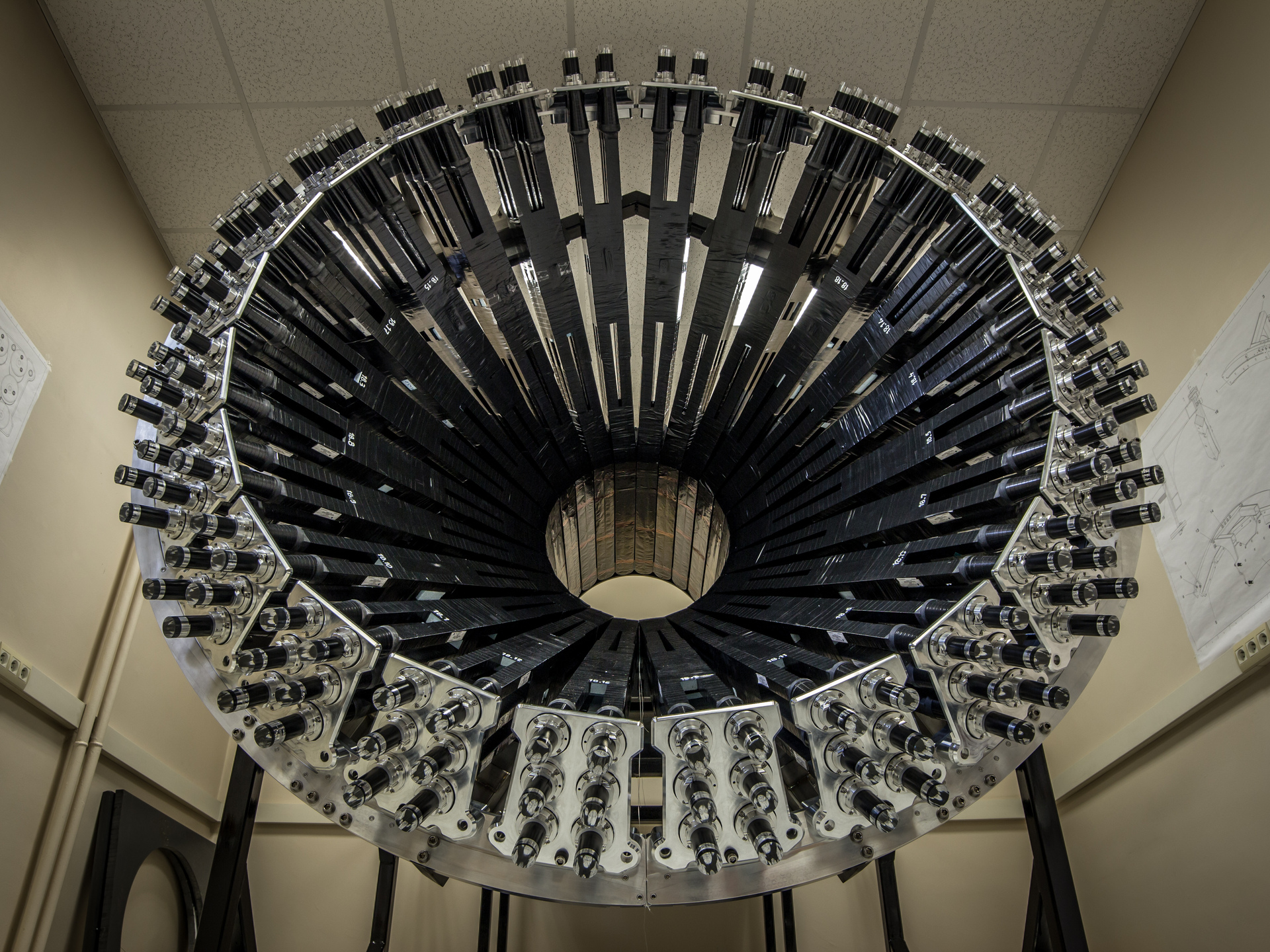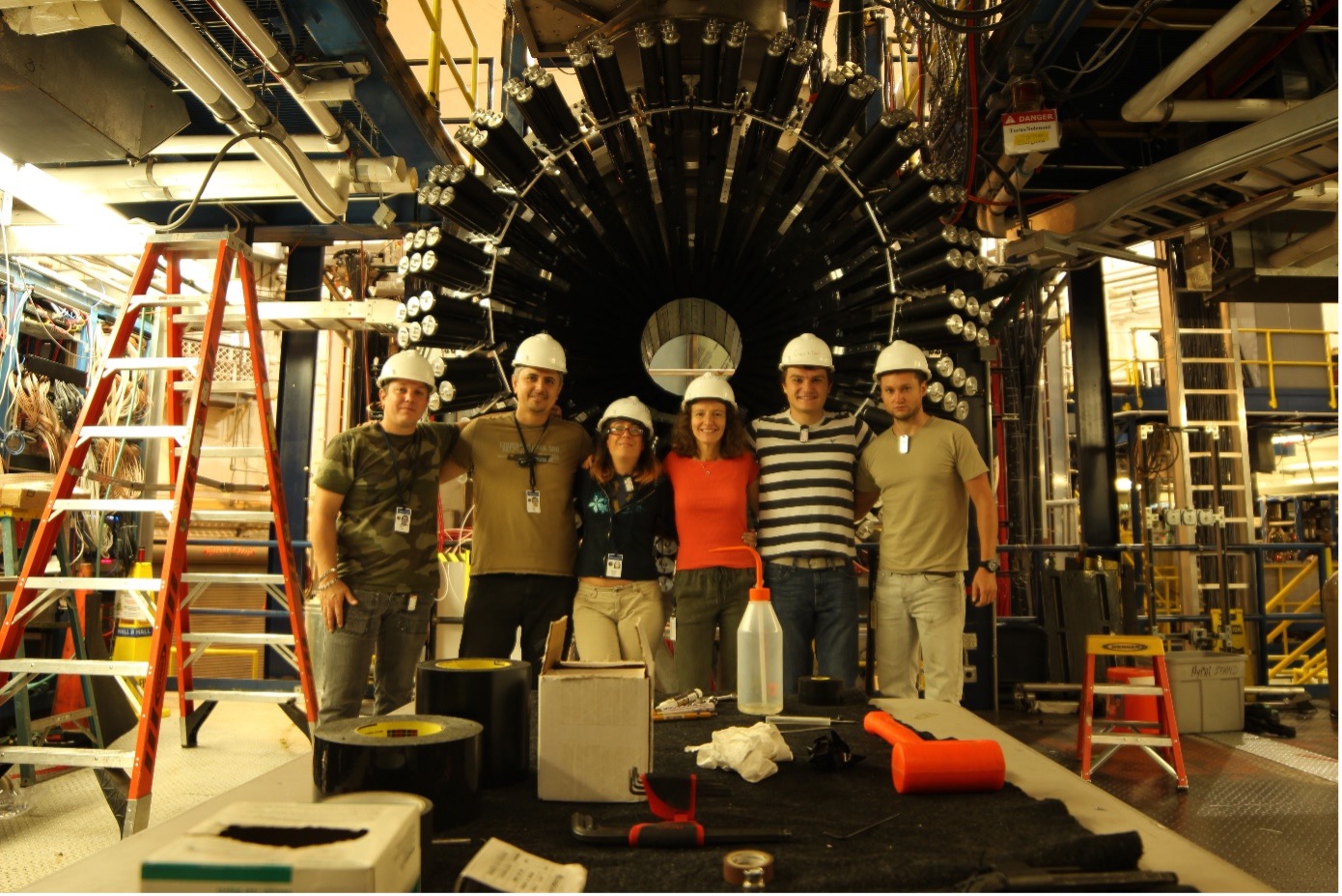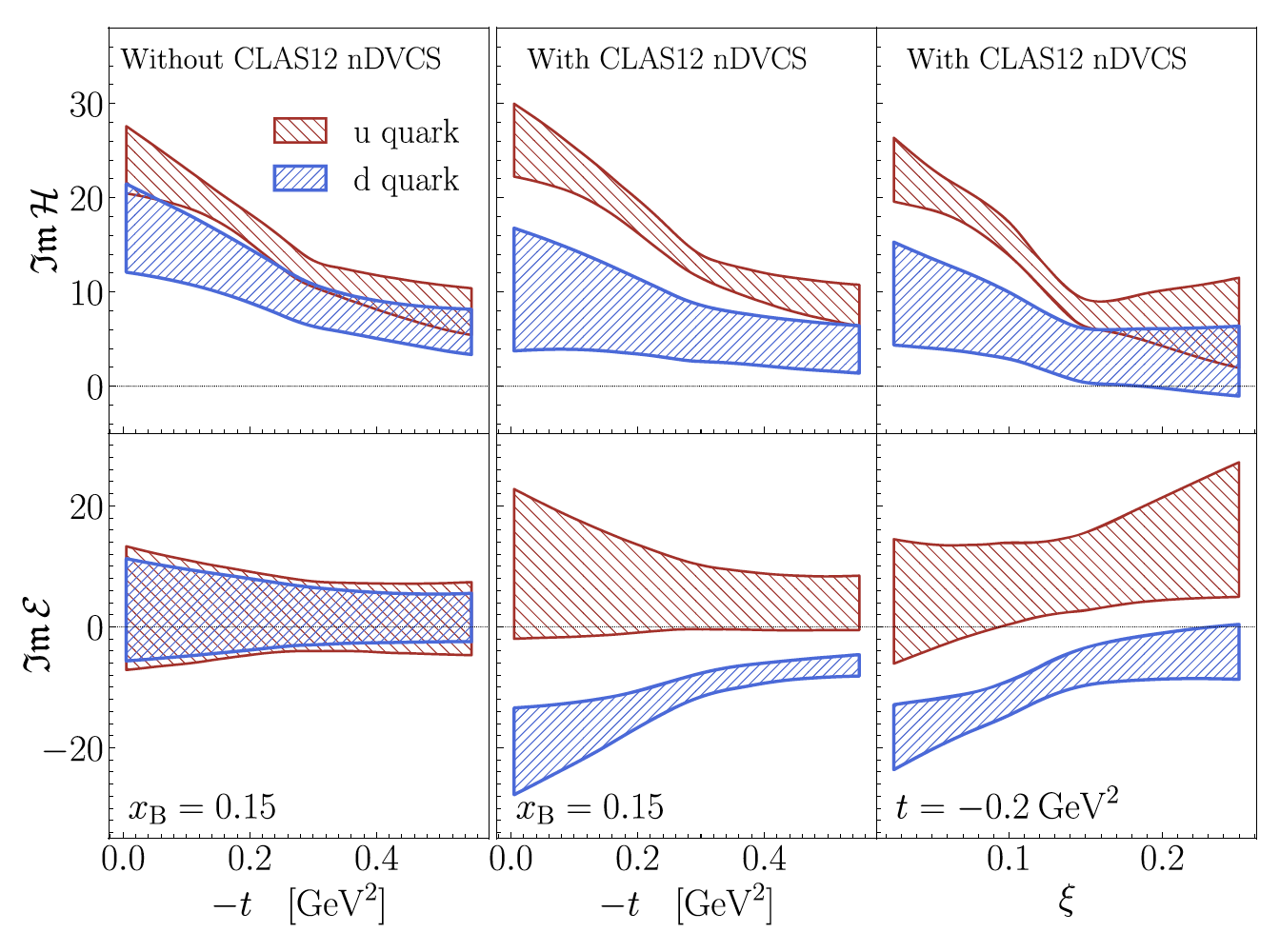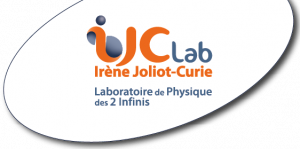
The JLAB/EIC team from the PHE (High Energy Physics) division of IJCLab (CNRS/IN2P3/Université Paris-Saclay) has just completed a key measurement by studying the interior of the neutron. This scientific advancement opens new perspectives for understanding how matter is constructed at the subatomic scale. In the photo: the Central Neutron Detector (CND), one of the components of the CLAS12 central detector, designed and built by the IJCLab teams. Credit: Julien Bettane/IJCLab
At the heart of matter: a 35-year-old enigma
Understanding the internal structure of matter is one of the major challenges of modern physics. At the heart of this research is the neutron, a fundamental particle that, along with the proton, constitutes the nucleus of atoms. Since the 1980s, physicists have been trying to solve a fascinating enigma: how do quarks, the elementary building blocks that make up the neutron, organize themselves to give it its properties?
The neutron, like any quantum particle, has a property called "spin," comparable to a microscopic top spinning on itself. In 1988, a surprising discovery revealed that quarks only contributed 20-30% of the neutron's total spin. This observation triggered what physicists call the "spin crisis": if quarks are responsible for only such a small part of the spin, where does the rest come from?
French engineering in service of international collaboration
To begin unravelling this mystery, the IJCLab team, led by Silvia Niccolai, developed a dedicated instrument: the Central Neutron Detector (CND).
 The CND in Hall B of Jefferson Lab, with IJCLab physicists who worked on its installation. From left to right: Bernard Mathon, Miktat Imre, Giulia Hull, Silvia Niccolai, Pierre Chatagnon, Julien Bettane. Credit: IJCLab
The CND in Hall B of Jefferson Lab, with IJCLab physicists who worked on its installation. From left to right: Bernard Mathon, Miktat Imre, Giulia Hull, Silvia Niccolai, Pierre Chatagnon, Julien Bettane. Credit: IJCLab
This detector, whose design was conceived by Joel Pouthas, is the result of several years of development by a team of engineers and technicians under the direction of Giulia Hull and Julien Bettane. Installed at Jefferson Laboratory (JLab) in the United States, the CND is integrated into a larger experimental device called CLAS12, a spectrometer capable of simultaneously detecting multiple types of particles.
The experiment uses a longitudinally polarized electron beam, with an average polarization of 85%, which bombards an unpolarized liquid deuterium target. The observed process, called "Deeply Virtual Compton Scattering" (DVCS), allows measurement of the interaction between a high-energy virtual photon and a quark in the neutron.
This reaction requires the detection of three particles: the scattered electron, the neutron, and the produced photon. To optimize neutron selection and reduce background noise, the researchers developed a multiparametric analysis, using machine learning, essential to obtaining the final results.
Essential results for research in fundamental physics
The data analysis, conducted by Mostafa Hoballah, has allowed for the first time to obtain a clear flavor separation of the neutron's Compton Form Factors (CFF). These mathematical functions precisely describe how quarks are organized inside the neutron.
Figure 6 of the publication strikingly illustrates the major advancement made by this experiment. This figure shows the extraction of contributions from up quarks (represented in red) and down quarks (in blue) to the imaginary parts of the Compton Form Factors H (upper part) and E (lower part).
These contributions are represented as functions of two important physical variables:
t, the measure of energy transfer between the initial and final state of the neutron during the interaction - which tells us about the intensity of the interaction.
ξ (xi), the change in relative velocity of the quark during the interaction with the virtual photon - a value that can be measured in our experiments.
 The left column shows the state of knowledge before the data inclusion from the CLAS12 nDVCS experiment. The colored areas that largely overlap illustrate the uncertainty that existed then on the respective contributions of different types of quarks. The other two columns include the new data obtained thanks to CLAS12 and IJCLab's CND detector, revealing a much clearer separation between the contributions of up and down quarks.
The left column shows the state of knowledge before the data inclusion from the CLAS12 nDVCS experiment. The colored areas that largely overlap illustrate the uncertainty that existed then on the respective contributions of different types of quarks. The other two columns include the new data obtained thanks to CLAS12 and IJCLab's CND detector, revealing a much clearer separation between the contributions of up and down quarks.
This clear distinction between the roles of different quarks has been a major objective of hadronic physics for decades.
This discovery is the result of an international collaboration involving more than 160 researchers from 49 institutions. The experiment, conducted between February 2019 and January 2020, allowed the collection of an impressive amount of data, with an integrated luminosity of approximately 285 fb⁻¹. The measurements, performed at different beam energies (10.6 GeV, 10.2 GeV, and 10.4 GeV), confirm the robustness of the results.
Towards a new understanding of the universe
Published in the prestigious journal Physical Review Letters and reported by Physics World, these advances demonstrate the excellence of French research in hadronic physics and the driving role of IJCLab in international collaborations. They contribute to our fundamental understanding of the structure of matter.
The IJCLab team is currently continuing its research with several objectives: the analysis of cross-sections, sensitive to other aspects of neutron structure, and the exploitation of data obtained with a longitudinally polarized deuterium target. This work will contribute to progressively solving the enigma of neutron spin and deepening our understanding of the fundamental constituents of the universe.
Learn more :
Physical Review Letters 133, 211903 – 20/11/2024
“Inner workings of the neutron illuminated by Jefferson Lab experiment” by Physicsworld - 17/12/2024























